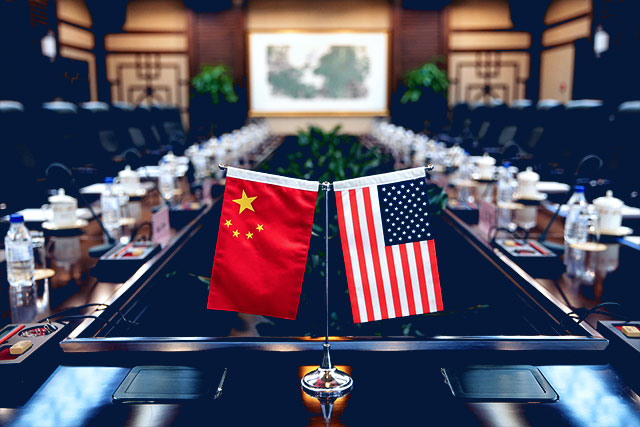On the question of America’s global security role, the choice between presidential candidates has rarely been starker than in 2024.
Trump has been a transformative figure, the first president since the Second World War to denounce American global leadership, call for a renunciation of alliances, and demand a much narrower interpretation of US foreign interests. There is still a contest underway in the Republican Party to see how far Trump’s retrenchment efforts will go, but the direction of movement is clear.1
That leaves the Democratic Party, now led by Vice President Harris, as the last champion of American foreign policy exceptionalism, the final redoubt for those who believe that the United States has global interests which must, if necessary, be protected by a military force that is second to none.2 Former Republican Vice President Dick Cheney’s recent endorsement of Harris can be interpreted in this light.
In her address to the Democratic National Convention accepting the presidential nomination, Harris promised to “strengthen — not abdicate — our global leadership”, and that America will always have “the strongest, most lethal fighting force in the world”.3
The military balance
There is no question that Harris can maintain America’s status as the leading military power in the world, but this ranking would be secure under Trump too, such is America’s lead. It has by far the world’s biggest military budget, the biggest navy by tonnage, and the biggest air force by aircraft. It boasts an unequalled technological base to develop new weapons. For more than two years, the United States has led international efforts to support Ukraine, frustrating Putin’s ambitions while spending just 0.16 per cent of its GDP.4
But Russia is a comparatively weak foe. Whether Harris is judged to have upheld the tradition of global military activism supported by Cheney and embodied in Joe Biden’s claim that “American leadership is what holds the world together” will not be decided on the battlefields of Ukraine. It will be judged by the extent to which the United States tries to reverse its eroding military advantage over China.
China is a much harder challenge than Russia because Beijing has so many more resources at its disposal, most importantly a massive economy that has devoted an estimated US$474 billion to its military in 2024, or a bit more than one-third of the Pentagon’s budget.5 For that comparatively modest outlay, China has built a modern and capable air and maritime force that can threaten the United States and its allies close to China’s shores. It cannot compete with the United States in ship tonnage or aircraft numbers, but it doesn’t have to, because China doesn’t (yet) have global military ambitions. Even so, China now threatens America’s lead in critical respects. It is quadrupling the size of its nuclear arsenal, and its navy already has more ships than the US Navy.
AUKUS and American resolve
A new report by India’s Observer Research Foundation finds that China’s nuclear-powered submarine program has finally matured, too.6 If, as the report projects, the new Bohai shipyard can indeed produce three to four nuclear-powered attack submarines (SSNs) per year, that translates to a fleet of 30 to 40 in a decade. By this same point in time, Australia is expected to have inducted perhaps two Virginia-class SSNs under the AUKUS arrangement, while the US Navy will likely have 50 to 60 SSNs.
These are long-term projections, yet decisions made by the Harris administration will determine if they meet reality. A Harris administration can decide to invest in the US military-industrial base so that the United States can match Chinese shipbuilding rates, and it can boost defence spending to correct the tilt away from US dominance in Asia. A Harris administration can elect to leave European security to the Europeans so that the United States can concentrate its forces in Asia.
But as with so many aspects of Harris’ worldview, the little information we have about her preferences suggests her presidency will produce continuity rather than change. We should expect more initiatives like those the Biden team initiated in Asia, such as AUKUS, expanded US basing in the Philippines, and a strengthened nuclear deterrent agreement with South Korea. But we should not expect dramatic new military investments or a major rebalancing of forces to Asia, since none of her post-Cold War predecessors have done this either.
Under a Harris administration, then, the Asian military balance will continue to shift away from the United States and towards China. As with so many of her predecessors, Harris would maintain rhetorical fealty with America’s tradition of muscular internationalism, but also like them, she would find it impossible to pay the increasingly steep price required to enact it.
Notes
- Sam Roggeveen, “Trump has Clashing Instincts on Asian Security, but China Competition will Continue”, Trump 2.0, Lowy Institute, 16 August 2024, https://interactives.lowyinstitute.org/features/trump-redux/article/trump-and-asian-security/.
- James Curran, “Democrats Now the American Dreamers”, Australian Financial Review, 18 August 2024, https://www.afr.com/policy/foreign-affairs/democrats-now-the-american-dreamers-20240818-p5k38o.
- Kamala Harris, “Read: Kamala Harris’ Full Speech at the Democratic National Convention”, PBS News, 23 August 2024, https://www.pbs.org/newshour/politics/read-kamala-harris-full-speech-at-the-democratic-national-convention-2.
- Jonathan Masters and Will Merrow, “How Much US Aid is Going to Ukraine?”, Council on Foreign Relations, 9 May 2024, https://www.cfr.org/article/how-much-us-aid-going-ukraine.
- M. Taylor Fravel, George Gilboy, and Eric Heginbotham, “China’s Defense Spending: The $700 Billion Distraction”, War on the Rocks, 2 September 2024, https://warontherocks.com/2024/09/chinas-defense-spending-the-700-billion-distraction/.
- Monty Khanna, “The Nuclear Submarine Building Capacity of China’s Bohai Shipyard”, Observer Research Foundation, 6 September 2024, https://www.orfonline.org/research/the-nuclear-submarine-building-capacity-of-china-s-bohai-shipyard.








